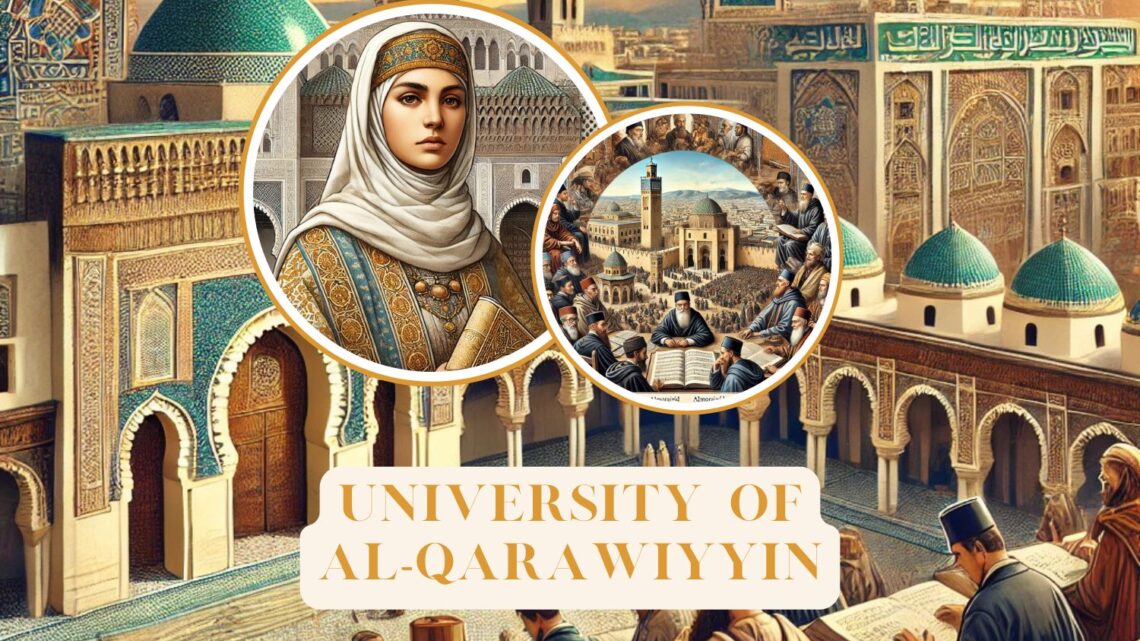
The University of Al-Qarawiyyin, located in Fez, Morocco, is renowned for being the oldest continuously operating educational institution in the world. Founded in 859 AD, Al-Qarawiyyin has played a pivotal role in the development of Islamic scholarship, culture, and intellectual history. Its significance extends far beyond the Islamic world, influencing scholars and institutions in Europe and the wider world.
In this article, we will explore the rich history of Al-Qarawiyyin, its contributions to global education, and key moments that have shaped its legacy.
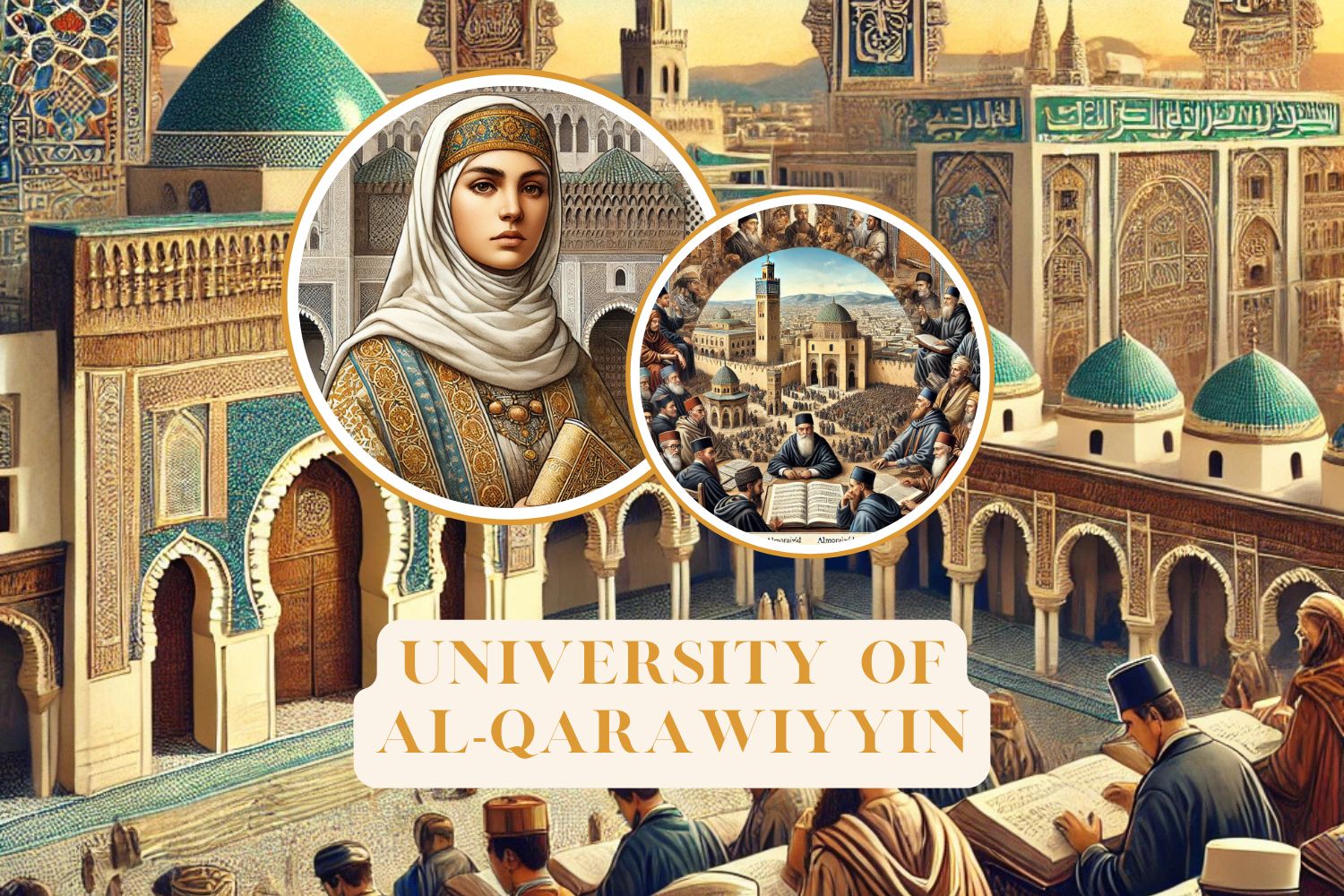
The Founding of Al-Qarawiyyin
Al-Qarawiyyin was founded in 859 AD by Fatima al-Fihri, a wealthy woman of Arab descent, originally from the city of Kairouan in present-day Tunisia. Fatima and her sister, Maryam, came from a prosperous family that had migrated to Fez. Following the death of their father, Fatima used her inheritance to establish a mosque that would become the heart of what would later evolve into the University of Al-Qarawiyyin.
Initially, the mosque served as a place of worship, but over time, it became a prominent center for learning, attracting scholars from across the Islamic world. The university provided a space where scholars could discuss and teach subjects like Islamic law (fiqh), grammar, mathematics, astronomy, medicine, and philosophy.
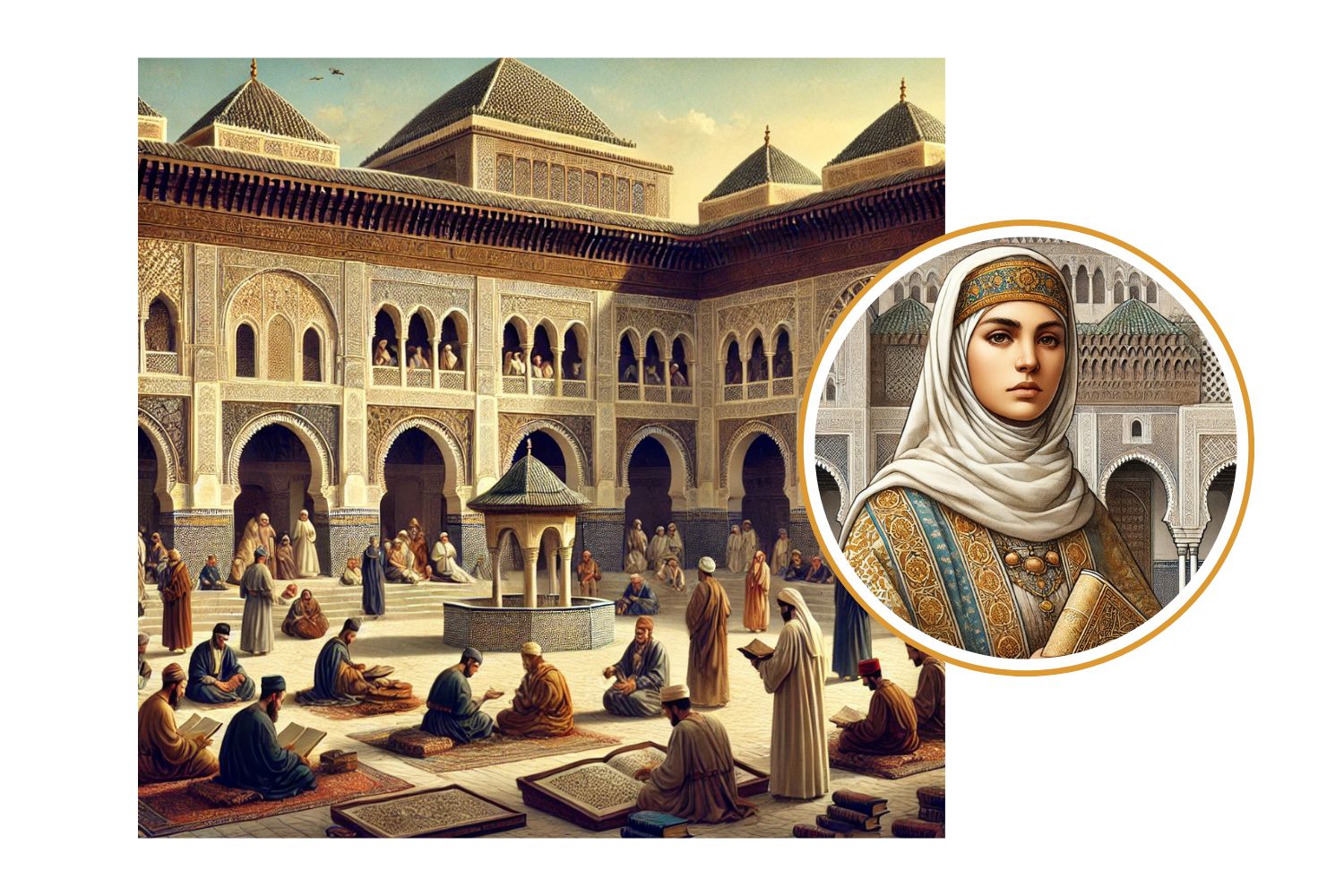
Al-Qarawiyyin as a Center of Learning
By the 10th century, Al-Qarawiyyin had established itself as one of the leading centers of learning in the Islamic world. Its curriculum expanded beyond religious studies to include a wide range of subjects, making it a precursor to the modern-day university system.
Scholars who taught or studied at Al-Qarawiyyin came from different parts of the world, including Spain, sub-Saharan Africa, and the Middle East. The university attracted students and professors from various Islamic sects, and many of its graduates went on to hold prominent positions in government and academia.
- Mathematics and Astronomy: The university played a key role in the development of mathematics and astronomy in the Islamic Golden Age. Scholars at Al-Qarawiyyin studied algebra, geometry, and astronomy, contributing to advancements in fields such as navigation and timekeeping.
- Medicine and Science: Many renowned physicians and scientists received their education at Al-Qarawiyyin, including Ibn al-Arabi and Ibn Khaldun, who contributed to various disciplines, from geography to history.
- Islamic Philosophy: Philosophers like Averroes (Ibn Rushd) and Maimonides, who later influenced European thought, were associated with Al-Qarawiyyin, illustrating the exchange of ideas between Islamic and Western scholars.
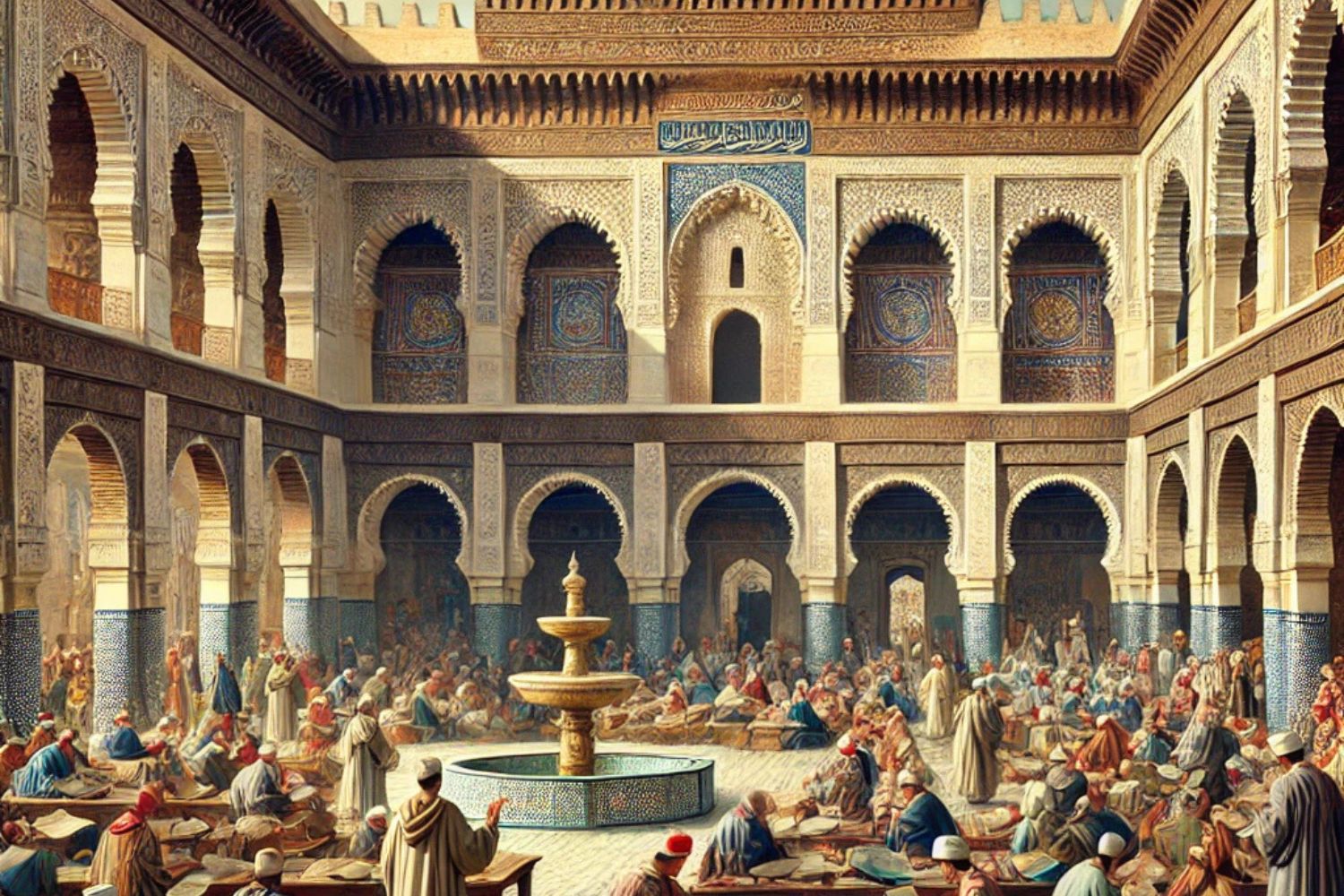
Key Historical Moments and Expansion
The Fatimid and Almoravid Eras
In the 10th century, the Fatimids took control of Fez, and under their rule, Al-Qarawiyyin continued to flourish. The university became a place where theology, Islamic jurisprudence, and the Arabic language were studied in great detail. By the time the Almoravid dynasty ruled in the 11th century, the university had cemented its reputation as one of the premier institutions for Islamic studies.
The Marinid Dynasty
The Marinid dynasty in the 13th century provided substantial support to Al-Qarawiyyin. They built additional madrasas (schools) around Fez to support education and provided financial backing to the university, allowing for the growth of its library and curriculum.
One of the most important developments during the Marinid period was the construction of Madrasat al-Attarine and Madrasat al-Sahrij, which served as student accommodations and expanded learning spaces. These madrasas remain significant examples of Moroccan architecture today.
Influence on European Education
By the 12th and 13th centuries, the intellectual exchange between the Islamic world and Europe began to increase, largely facilitated by cities like Fez, Toledo, and Córdoba. The works of Islamic scholars, particularly in philosophy, mathematics, and medicine, were translated into Latin and contributed to the growth of European universities.
In fact, some of Europe’s oldest institutions, such as the University of Bologna and University of Paris, are believed to have been inspired by the organizational structure and teaching methods employed at Al-Qarawiyyin.
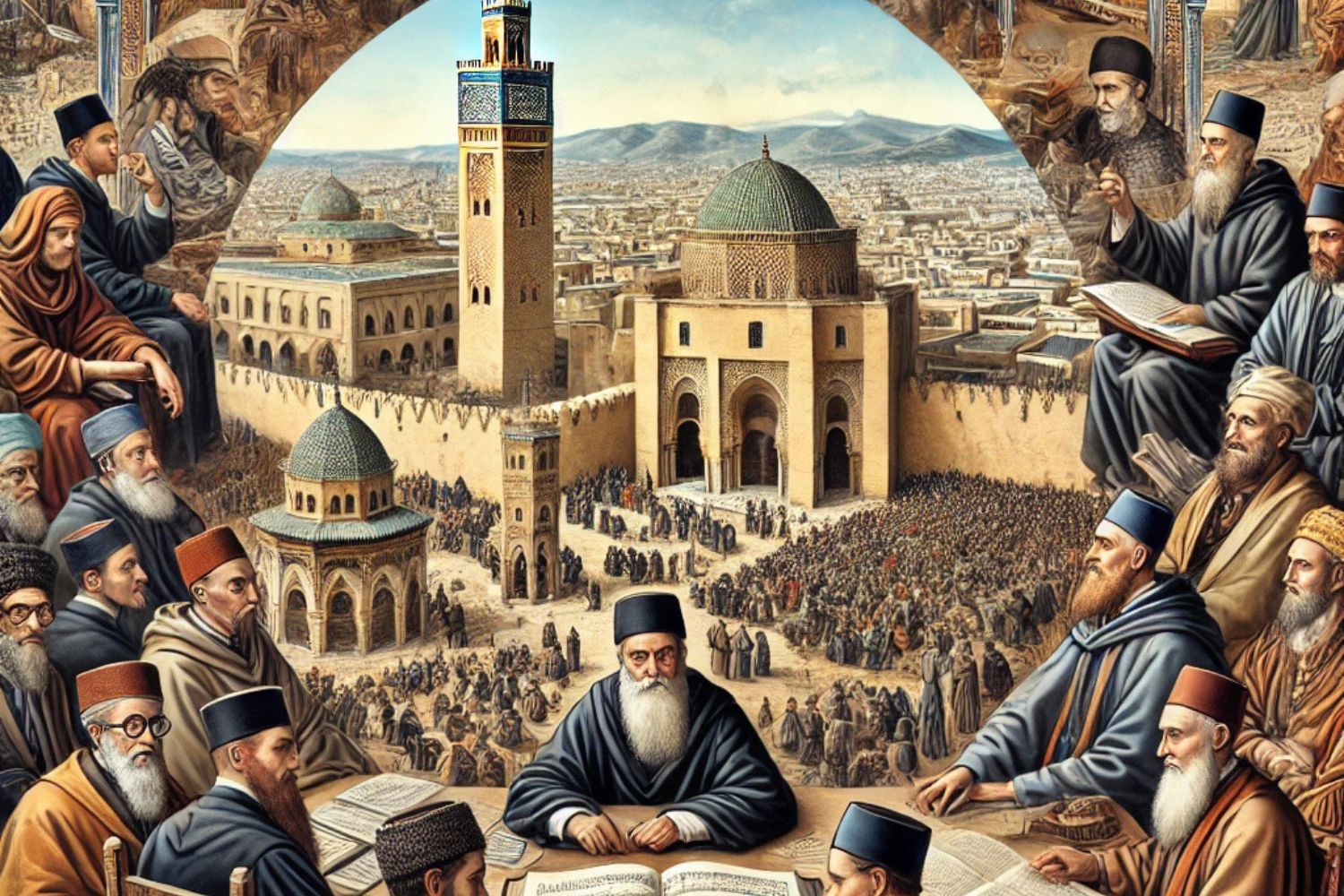
The Al-Qarawiyyin Library
One of the university’s greatest treasures is its library, which is one of the oldest and most prestigious libraries in the world. The Al-Qarawiyyin Library was founded in the 10th century and holds a vast collection of ancient manuscripts and books. It has served as a repository for knowledge for centuries, housing texts in various fields such as Islamic law, astronomy, medicine, and mathematics.
The library contains some of the most important works of the medieval Islamic world, including ancient copies of the Quran, works by Ibn Khaldun, and treatises on geometry and medicine. In 2016, the library underwent a major renovation, ensuring the preservation of these invaluable texts.
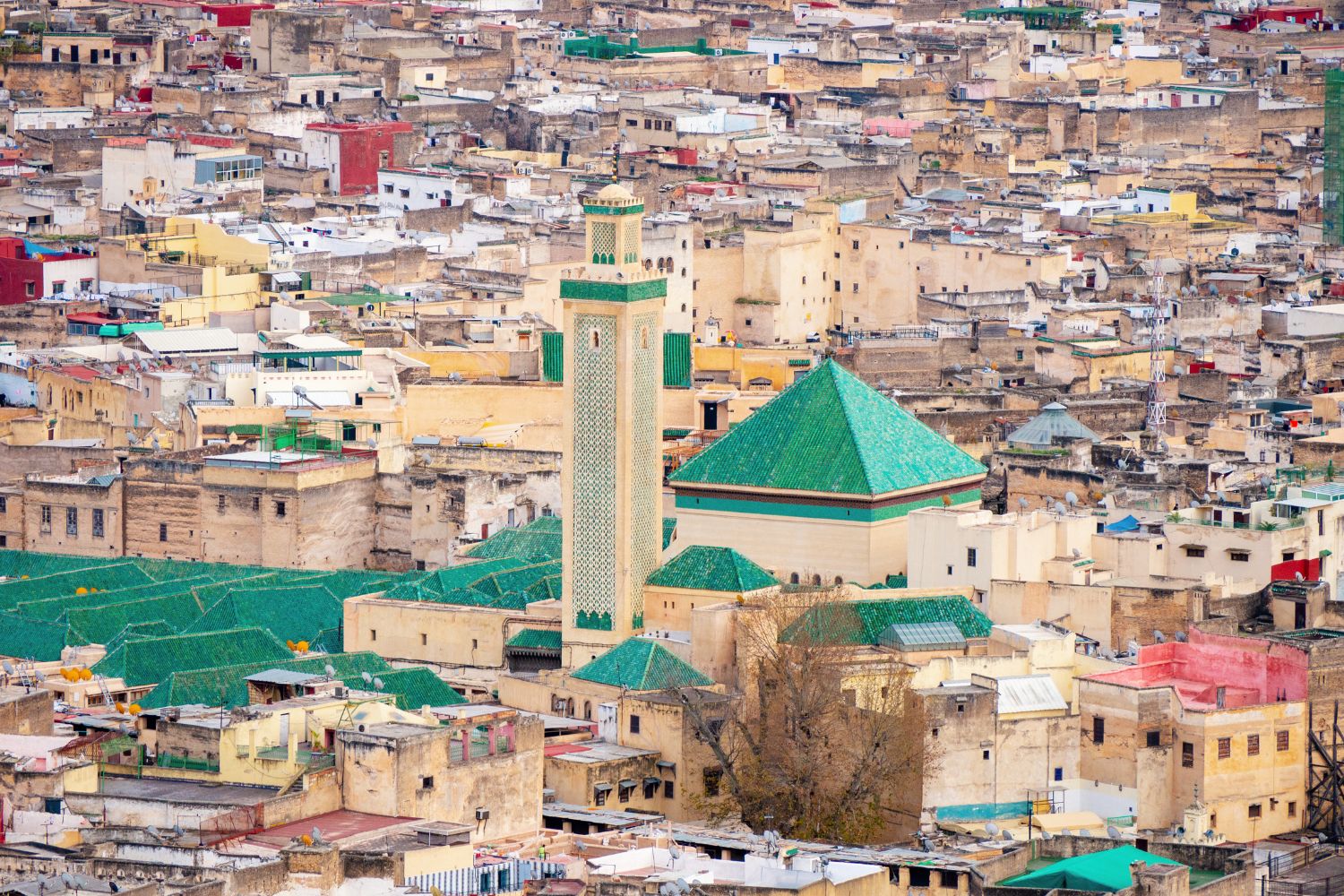
Al-Qarawiyyin in Modern Times
Today, Al-Qarawiyyin remains a respected institution of higher learning, though it primarily focuses on Islamic studies. It continues to play an essential role in the intellectual life of Fez and Morocco, attracting scholars and students from across the world. The university has adapted to modern times by integrating contemporary subjects into its curriculum, such as economics, natural sciences, and foreign languages.
In 1963, Al-Qarawiyyin was incorporated into the modern Moroccan university system, marking its official recognition as a state university. Despite these changes, Al-Qarawiyyin has retained its unique historical character, serving as a bridge between the past and the present.
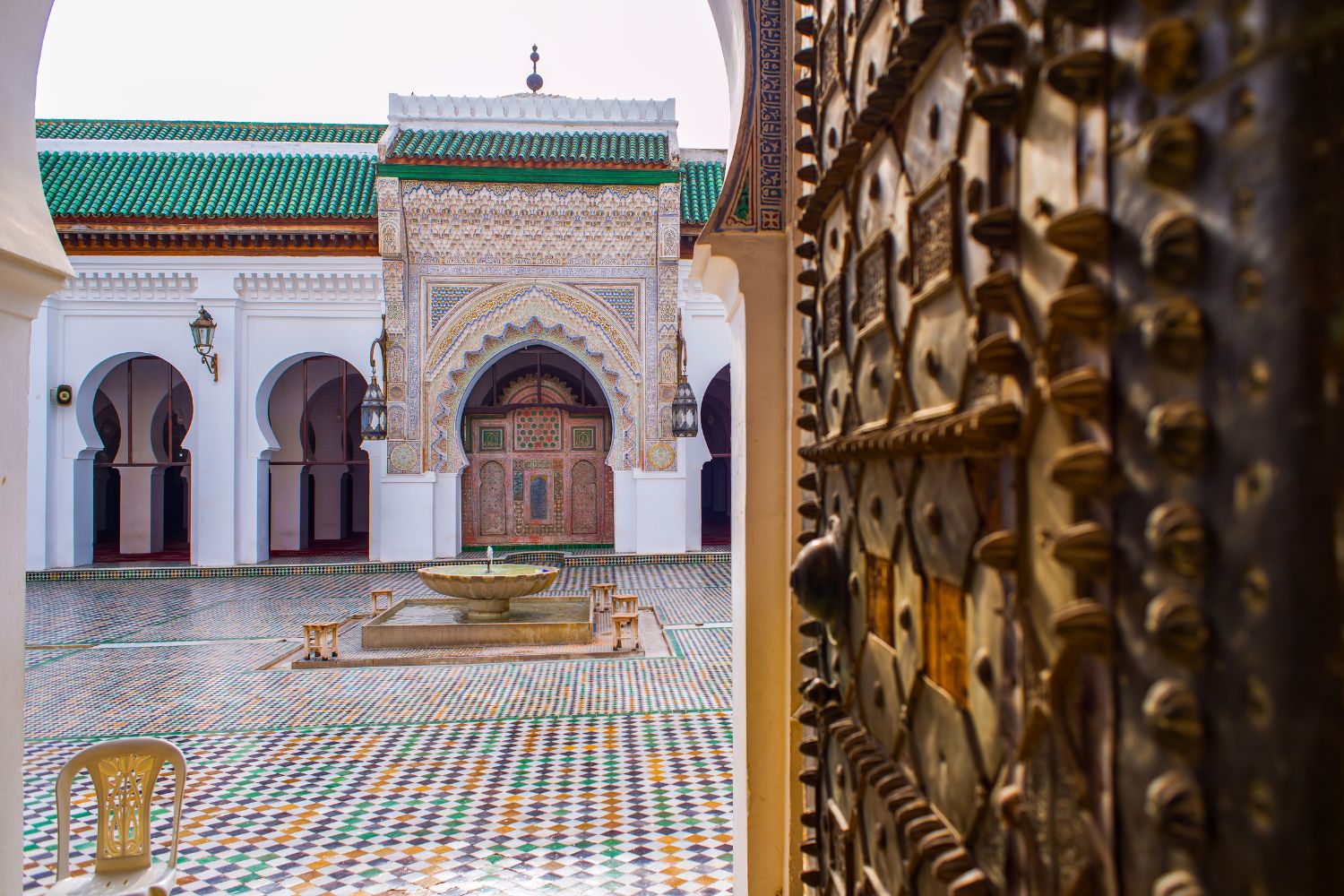
UNESCO World Heritage Site
The historical significance of Al-Qarawiyyin and its surrounding medina have been recognized by UNESCO, which declared the Medina of Fez a World Heritage Site in 1981. The university and its architectural marvels, including the Al-Qarawiyyin Mosque, are preserved as part of the rich cultural heritage of Morocco.
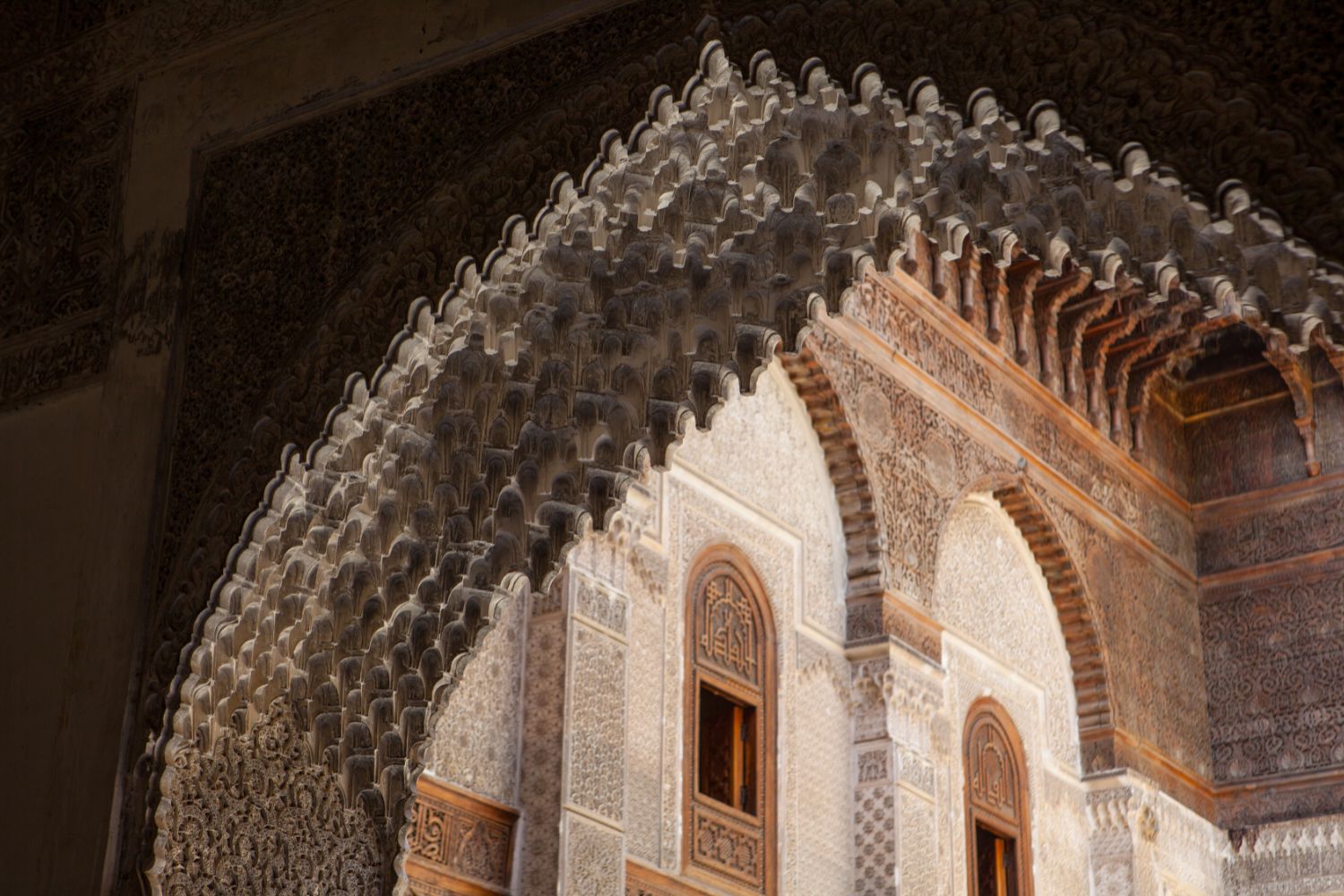
The University of Al-Qarawiyyin stands as a symbol of Morocco’s enduring intellectual and cultural legacy. As the oldest university in the world, its contributions to the fields of science, philosophy, law, and theology have been far-reaching, influencing both the Islamic world and Europe. Today, it remains a testament to the flourishing of knowledge and the exchange of ideas in the medieval period, continuing to inspire future generations of scholars.